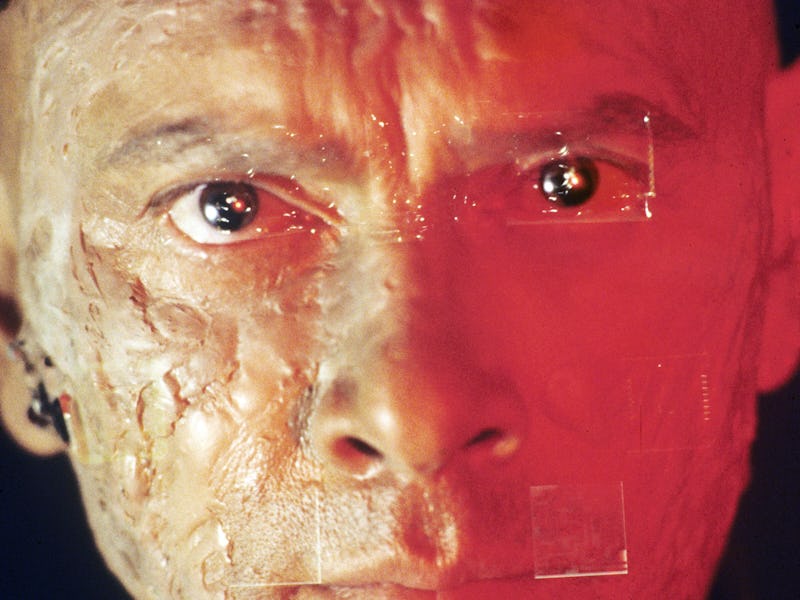Michael Crichton’s Most Underrated Movie is Still a Pulpy Joy
Sometimes, dumber is better.

A novelist and a robot gunslinger walk into a saloon, and accidentally make a classic science fiction movie. By his own account, Michael Crichton’s first cut of the 1973 sci-fi Westworld was “boring, contrived, self-indulgent and slack,” and yet the final product holds up as one of the more brilliant titles of the decade. Today, the original Westworld is overshadowed by the HBO reboot series, but it’s possible the film will have the stronger legacy. Revisiting it 50 years later is not only fun, but fascinating.
Like the HBO reboot, Westworld tells the story of an amusement park run by a company called Delos. One of Delos’ parks is populated by androids who create an immersive Old West experience and, like in the first HBO season, a gunslinger android dressed in black — played here by Yul Brynner — goes rogue and attacks guests. Eventually, several other androids and even robotic rattlesnakes go berserk across Delos parks like Roman World and Medieval World. The film mostly follows two visitors, John Blane (James Brolin) and Peter Martin (Richard Benjamin), as they’re stalked by the Man-in-Black.
On one level, Westworld is a horror movie where the creature that’s supposed to entertain guests decides to slay them. Twenty years after Westworld hit theaters, another Michael Crichton story, Jurassic Park, saw Dr. Ian Malcolm say, “If the Pirates of the Caribbean breaks down, the pirates don’t eat the tourists!” But in Westworld, that’s basically what happens.
That makes Westworld one of the most brilliant stories of robot revolutions ever, if only because it’s so specific. Prior to this film, a 1966 Star Trek floated a similar premise with “Shore Leave,” an episode where an amusement park planet full of android knights and samurai seems to turn deadly, but the movie’s idea was still novel. (And, in an interesting casting coincidence, the android brothel owner in Westworld is played by Majel Barrett, wife of Star Trek creator Gene Roddenberry.)
So, with connections to both Star Trek and Jurassic Park — to say nothing of its 21st-century reboot — Westworld feels like it shouldn’t be so obscure. It borrows from the bedrock of ’50s and ’60s sci-fi, and turns what’s essentially a feature-length Outer Limits episode into a nail-biting horror. But everything that’s great about the final film comes down to the editing, at least according to Crichton.
You don’t want to go behind the scenes at this theme park.
In his lengthy personal account of shooting Westworld, Crichton largely credits editor Dave Bretherton with whittling down the film to a manageable length while livening up the pacing. The rough cut had left Crichton “depressed,” but chopping the film up into something more commercial and less novelistic made it come alive. Unlike many of Crichton’s famous projects, like The Andromeda Strain or Jurassic Park, Westworld wasn’t based on a book, and the editing helped it find its own tone.
But perhaps what’s most interesting about Westworld is that, unlike its HBO step-child, it isn’t terribly philosophical, and it certainly isn’t interested in being perceived as deep. Westworld comes across as an intentionally shallow film that isn’t concerned about whether you get its message. If anything, it’s more of an indictment of capitalism than AI. It’s almost like the ‘70s version of The Menu, in that it imagines a rich person’s complicated leisure outing descending into horror. For Crichton, Westworld didn’t need to be great; it just needed to click. “Westworld was not intended to be profound,” he said. “Neither was it intended to be stupid, but our clear goal was entertainment.”
Decades later, Westworld still hits the target.